SUBJECTS
GRADE
Show Results
Follow the Drinking Gourd
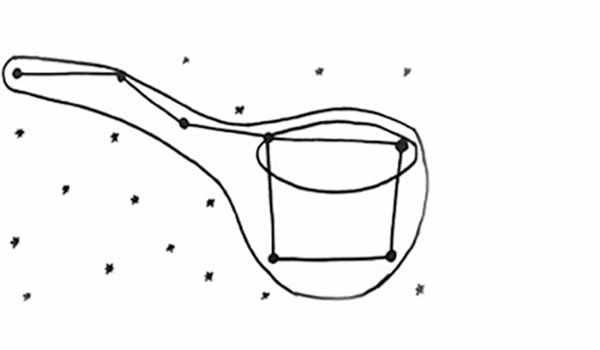
Lesson Summary
- Learn the song “Follow the Drinking Gourd" and discover the Underground Railroad code words found in the lyrics.
- “Read” a music map and see patterns in the song.
Lesson Plan and Procedure
Lesson Key Facts
- Grade(s): 5
- Subject(s): Music, Social Studies
- Duration of lesson: 45 minutes
- Author(s): Susan Kenney
Vocabulary
Quail; drinking gourd; two hills (Woodall Mountains, the highest mountain range in Mississippi); old man (as a code); left foot-peg foot; three rivers (Tombigbee, Tennessee, and Ohio); meter; phrase
American History Background—Civil War Period
The song “Follow the Drinking Gourd” is an example of how the slaves communicated so their white masters would not understand. The Underground Railroad (mid-19th century) was not a railroad at all, but a way for African-American slaves to escape to freedom in the northern part of the United States or Canada. The song is in code. The folk song has played an important role in bringing awareness to the history of fugitive slaves as they found their way to freedom.
The picture book Follow the Drinking Gourd by Jeanette Winter makes a beautiful picture-story to accompany this song. Search the web for more information about this period in American history.
Follow the Drinking Gourd
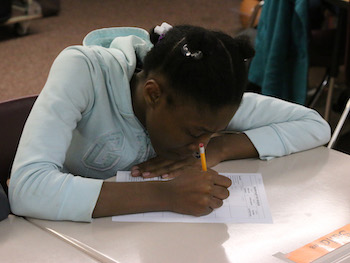 Discuss the concept of the Underground Railroad as a secret network to help slaves escape captivity and move to freedom during the mid-19th century. Explore the idea that code words were used to communicate among the slaves, so their white masters would not understand their communications.
Discuss the concept of the Underground Railroad as a secret network to help slaves escape captivity and move to freedom during the mid-19th century. Explore the idea that code words were used to communicate among the slaves, so their white masters would not understand their communications.
Teacher: “Follow the Drinking Gourd” is a song filled with secret messages or code words used to help the slaves escape. The first verse tells what part of the year the slaves should leave, what time of day or night, and what they should follow. Can you identify any of the code words that communicate that information?
Sing verse one. After singing, help students realize the code meaning of “sun comes back, first quail calls, drinking gourd.” (See activity page and answers.)
Teacher: Peg Leg Joe was an old sailor who had lost one leg when he was in a battle at sea. He helped the slaves in many ways. He was called “the old man.”
Sing verse one again, inviting learners to imagine what the scene might look like, now that they understand the code words. Pass out the activity page “Guide to Listening,” and invite students to fill in the first five items as you sing again. Continue singing the entire song, inviting learners to imagine what all of the new words mean.
Teacher: Don’t write your answers yet, but think about them.
Discuss. Students should know that the “river bank” is the true road, and that “left foot, peg leg” is Peg Leg Joe. Show the slide of the tree with Peg Leg Joe’s markings drawn on or carved into the bark. (See PowerPoint presentation.)
Sing verses one and two again, and invite students to join in on parts they know.
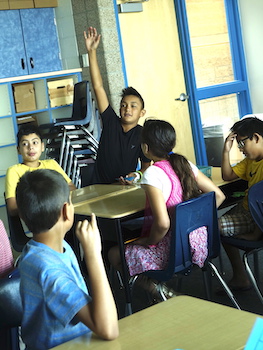
Teacher: Now we need a quick geography lesson. (Show a map of the area where the slaves traveled.) Notice the rivers. (Mississippi, Tombigbee, Tennessee, and Ohio.) At the place where the Tombigbee ends and the Tennessee River begins are the Woodall Mountains, the highest mountains in Mississippi. The song does not call them mountains. As you listen, discover what the song calls those mountains. Also, what does the song call the Tombigbee River and the Tennessee River?
Sing verse three. Discuss answers and fill in the chart as you sing verse three again.
When the slaves have gone this far, they are almost to their destination, which is safety in the northern states or on up to Canada. One more clue. Sing verse four. Discuss that the great, big river is the Tennessee River and the little river is the Ohio River. Sing verse four while learners finish filling in the chart. Sing all the verses of the song, inviting the learners to join you. Pay attention to areas where students may not be singing the correct words, melody, or rhythm for future work.
Music Connections
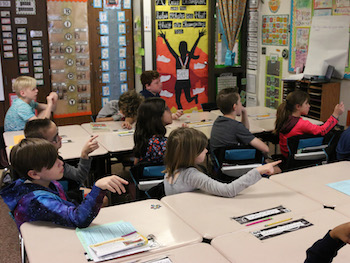
Show students the music map chart. (See the equipment and materials section.)
Teacher: In a way, the secret code was like a map to help the slaves know the way. Here is a music map to help us know our way through the song. What do you notice?
Learners may see patterns. Perhaps the shape of a drinking gourd, and so on. Invite students to follow the lines with their fingers while singing; then discuss anything else they noticed. Guide students to the part in which “follow the drinking gourd” is sung.
Teacher: How many times do we hear the phrase “follow the drinking gourd” in each verse? (Five times.) Is the melody the same every time? (No.);
Help students discover which melodies are the same. Show students the two melody patterns, and ask which goes with which singing. Ask one group of students to sing all the tunes that follow the first “follow the drinking gourd” and another group to sing the second tune, while you sing the rest of the song. Enjoy the challenge.
Try singing the entire song while following the map, and then invite students to bounce-conduct with you while singing.
Invite the learners to sing the song alone as you listen. Consider accompanying on the autoharp. 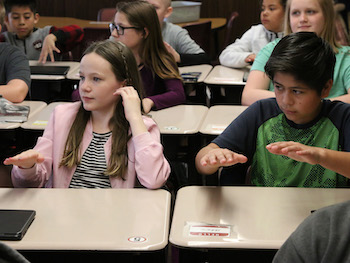
Music Ideas Experienced
- Minor and major keys sound different. This song is written in minor.
- Music may have a steady beat.
- Beats may be organized into patterns of strong/weak, creating a meter of four.
- Patterns of sound may repeat or contrast.
- Song melodies may be accompanied with autoharp, piano, guitar, etc.
Other Possible Subject Integration
- U.S. history (Civil War)
- Patterns (math)
- Story, vocabulary, read symbols (literacy)
- Geography
- Astronomy
Learning Objectives
- Identify ways that slaves used the Underground Railroad to escape to freedom.
- Sing a historical folk song.
- Explore a song which connects us to history.
Utah State Board of Education Standards
This lesson can be used to meet standards in many grades and subject areas. We will highlight one grade’s standards to give an example of application.
Grade 5 Social Studies
Standard 5.4.4: Use primary and secondary sources to compare how differences in economics, politics, and culture (for example, slavery, political and economic competition in Western territories) between the North and South led to the United States Civil War.
Standard 5.4.5: Explain how the actions of key individuals and groups influenced the outcome of the Civil War (for example, Abraham Lincoln, Jefferson Davis, Clara Barton, Robert E. Lee, Ulysses S. Grant, Stonewall Jackson, William Tecumseh Sherman, Harriet Beecher Stowe, Rose O’Neal Greenhow, Frederick Douglass, Harriet Tubman).
Standard 5.4.7: Identify the Civil War’s most important outcomes (for example, end of slavery, Reconstruction, expanded role of the federal government, industrial growth in the North), and explain how outcomes of the Civil War continue to resonate today.
Grade 5 Music
Standard 5.M.P.4: Sing folk, traditional, and rounds in tune, with good vocal tone and clear diction.
Standard 5.M.P.5: Respond to visual representations of melodic patterns using pentatonic and diatonic scales.
Standard 5.M.R.2: Listen for and identify form, meter, rhythm, timbre, mood, tempo, melody, texture, and harmony/tonality.
Standard 5.M.CO.3: Deepen understanding of another content area through music.
Standard 5.M.CO.4: Experience and explore music which connects us to history, culture, heritage, and community.
Standard 5.M.CO.5: Identify connections between a music genre and cultural or historical contexts.
Equipment and Materials Needed
- “Follow the Drinking Gourd” sheet music and chord chart
- Map showing the path of the underground railroad including the rivers and mountains
- Image of the big dipper
- Slides 25-40 in PowerPoint: Folk Songs from U.S. History
- Activity page “Guide to Listening” and answers
- Music maps to follow while singing
Additional Resources
- Follow the Drinking Gourd by Jeanette Winter
- This lesson is a part of a series of lessons about folk songs from United States history. Other lessons in the series include the following:
Image References
Image 1: Susan Kenney and Kelli Coombs.
Image 2: James Huston
Image 3: Brenda Beyal
Images 4-5: James Huston

www.education.byu.edu/arts/lessons
 Download
Download